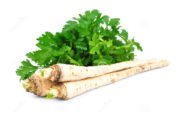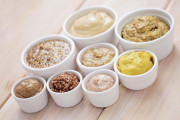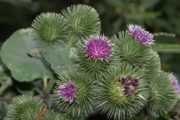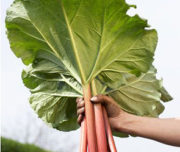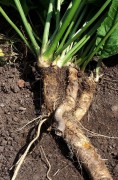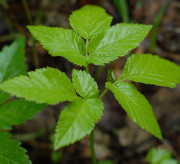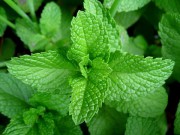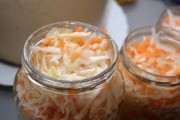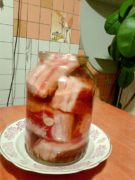Dandelion root: medicinal properties, uses and contraindications in folk medicine, harvesting for the winter. Coffee and tea made from dandelion roots.
People have known about dandelion root and its medicinal properties for a very, very long time. But, in folk medicine, as in principle with most plants, dandelion root has not only medicinal properties, but also a number of contraindications. However, first things first.
In order to preserve the medicinal properties as much as possible, it is necessary to dig up dandelion roots in early spring, when the leaves of the plant are just beginning to appear, since it is at this moment that a huge amount of nutrients, and therefore healing properties, are concentrated in the root. When the plant blooms, all the power from the root goes to the top. dandelion. Another favorable period for harvesting for the winter is late autumn, after the onset of the first frost. The leaves begin to die, the juice no longer flows into them, and all the nutrients go to the root as the plant prepares for winter.
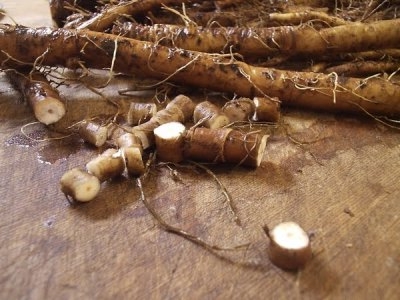
Photo. Dandelion root.
We thoroughly wash the roots and dry them in a draft. Then cut into small pieces and place in the oven, preheated to 50-60 degrees, until the roots dry and become crispy.

Photo. Dried dandelion root
Grind the dry pieces in a coffee grinder or mortar. Who likes it more?In this form, dry dandelion root can be used to prepare tasty, healthy and unusual drinks.

Photo. Ground dandelion root.
One of the main ways to use dandelion roots in folk medicine is to prepare an infusion. It helps with the following diseases: eczema, anemia, abdominal pain, sexually transmitted diseases, constipation, hemorrhoids, skin diseases, allergic rashes, gallbladder diseases, pulmonary diseases, etc. The list goes on. An amazing infusion of dandelion roots also helps improve metabolism and alleviate the condition of patients with sclerosis and atherosclerosis.

Photo. Dandelion root infusion.
Despite the enormous benefits, there is a category of people for whom dandelion infusion is contraindicated. These are people with the following diseases: ulcers, gastritis, bile duct obstruction. In addition, absolutely everyone is recommended to adhere to the prescribed dose of infusion; in case of excessive use, unpleasant symptoms such as vomiting and diarrhea may occur.
Dandelion root tea
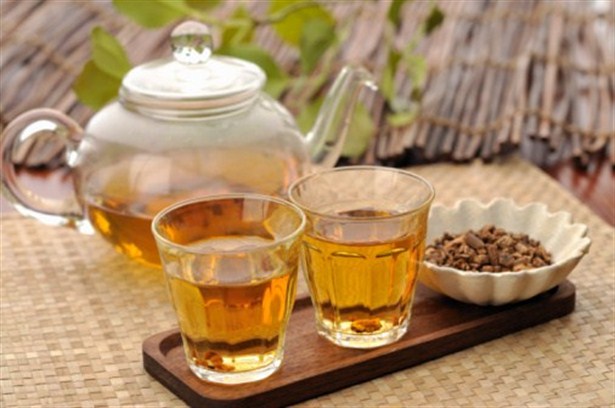
Photo. Dandelion root tea.
Dandelion tea has a stimulating effect on the gastrointestinal tract, lowers blood pressure and “bad” cholesterol.
To make tea from the root dandelion, you need to pour 1 tbsp. powder 200 ml. boiling water, let it brew in a dark place for 1 hour. Take a third of a glass orally, three times a day, 30 minutes before meals. The course should not exceed 7 days.
This tea is also indicated for people with a weakened appetite, since the drink stimulates the production of bile, saliva and gastric juice.
Dandelion root coffee
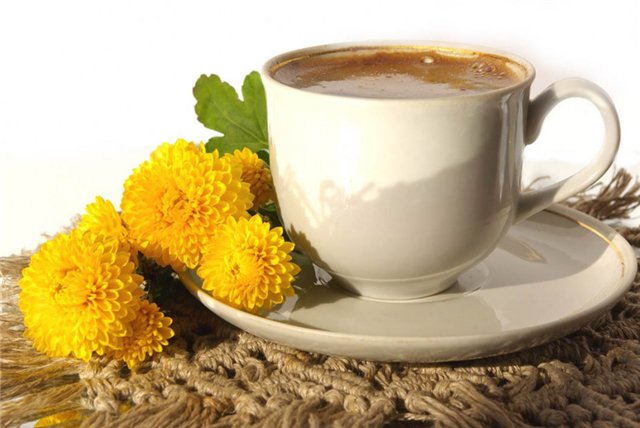
Photo.Dandelion coffee.
Another medicinal infusion from dandelion roots is the so-called dandelion coffee. It perfectly tones and invigorates, enriches the body with vitamin C, and does not contain harmful caffeine.
To prepare dandelion coffee, the roots must be cooked in the oven as described above, but a little longer - until they turn brown. Then you can brew it instead of your usual coffee, if desired, you can add cinnamon.
Store ground root powder in a dry place, in a tightly closed container, to avoid moisture getting into it. Use as needed.
Now you know how to dry and brew dandelion root, but in addition to this, they also prepare alcohol tinctures, and from leaves And flowers make healing preparations for the winter.




